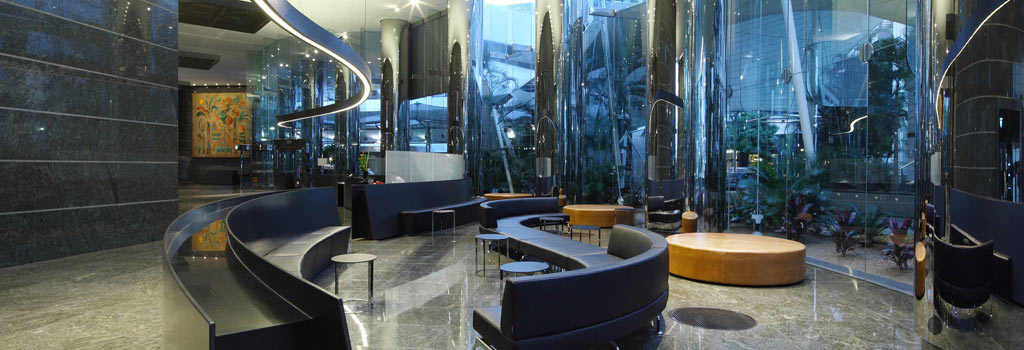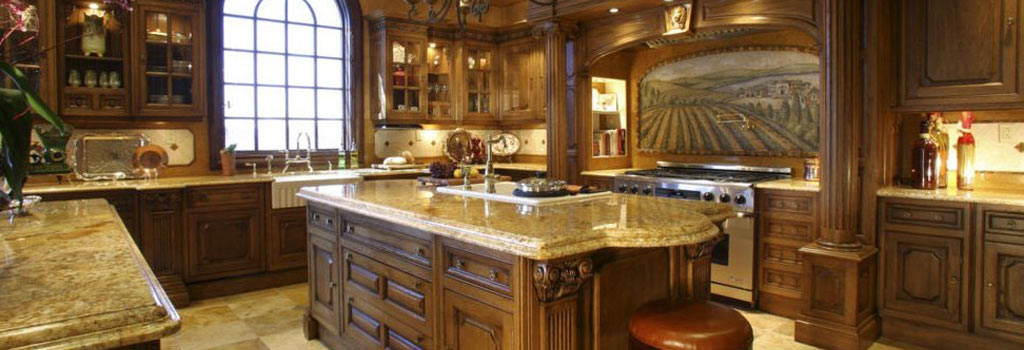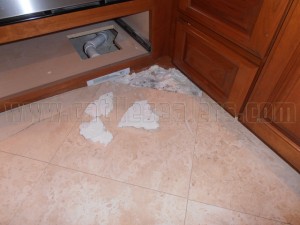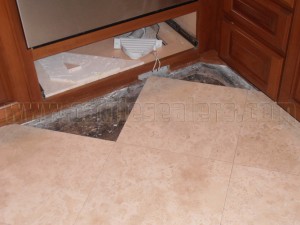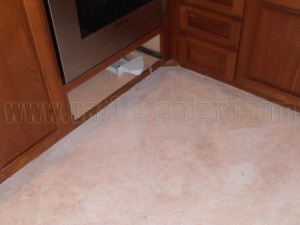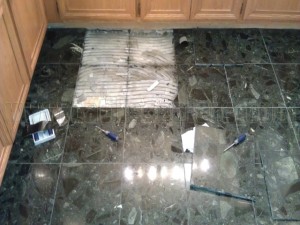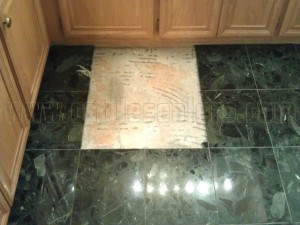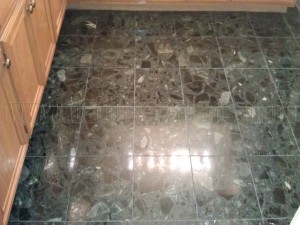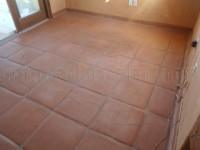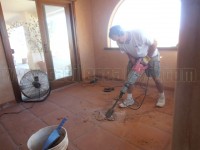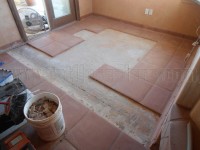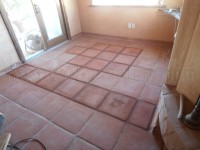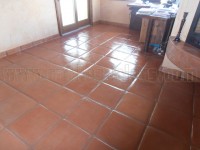Damaged or Loose Tile and Grout
The pictures below depict what can happen as a result of slab leak. The white powdery substance is “efflorescence”. Basically efflorescence is a salt deposit that is brought to the surface by evaporating moisture. As the moisture passes through the slab, trying to escape, it carries the salt to the surface. Judging by the amount of efflorescence, this has been leaking for quite some time. The pressure created by the build up of salt between the slab and the stone was so great, that the stone fractured. The salt actually disintegrated the mortar as well.
The repair was performed by removing the loose and broken tiles, cleaning the slab of all remaining salt and mortar residue, and re-installing new tiles. Eventually the entire floor was cleaned, diamond polished and sealed.
These natural stone tiles were loose due to a poor installation. The mortar on this install was mixed too dry causing the tile not to adhere properly. When the mortar is too dry, the tiles “sit on” the mortar rather than “sink into” it. Eventually the bond between the tile and mortar breaks, and the tiles become loose. This in turn causes the grout to crack.
The repair was performed by removing the loose tiles, scraping the old mortar from the slab, and re-installing tiles. Eventually the entire floor was cleaned, diamond polished and sealed.
Worn and Cracked Tile
These Tecate paver tiles were worn out due to an office chair equipped with “carpet” casters instead of “hard floor” ones. The carpet casters are made from hard plastic and are abrasive on clay tile and natural stone floors. After years of rolling around on it, the surface of the tile gets worn away. The row of cracked tile is from settling which created movement between the existing slab and the one for the room addition.
The repair was performed by removing the damaged tiles, scraping the old mortar from the slab, installing a crack isolation membrane and installing new tiles. Eventually the entire floor was stripped, acid washed, neutralized and sealed.
It’s not too uncommon for there to be more than one grout color in the same floor. If there has ever been any grout or tile repair work done, quite often the person doing the repair matches the grout color closely to what color is visible at the time. More times than not, they are matching to dirty grout. This occurs more often in natural stone installations, where smaller grout joints and non-sanded grout makes grout repair more common. After we remove all the dirt and sealers from the floor, you may be left with different colored grout. Believe it or not, all these pictures were taken from the same floor.

